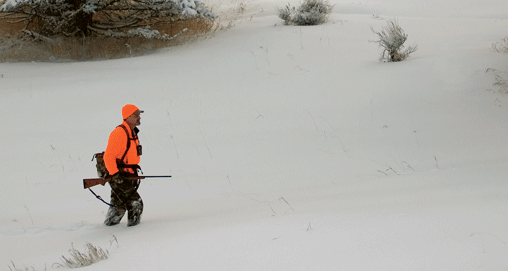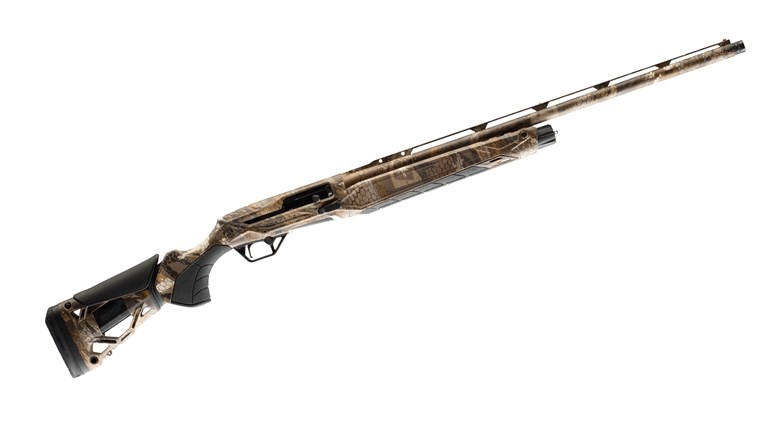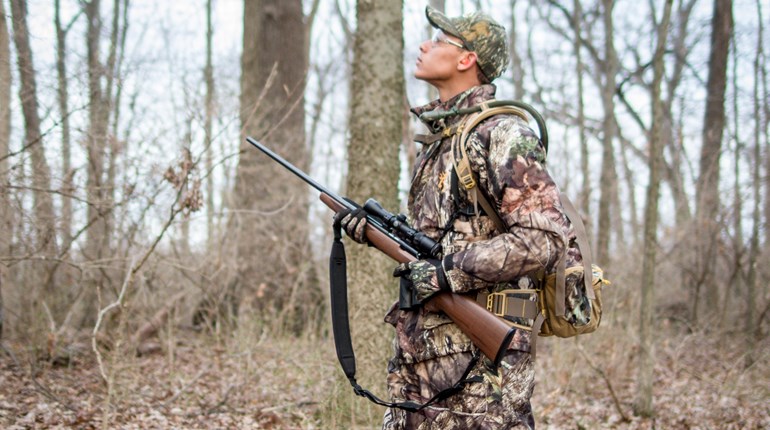
Tracking is the most effective way to take a big, northern whitetail buck. But it’s not easy. Of course, tracking will work anyplace you can find snow and whitetails, but tracking whitetail bucks works best where there is a good supply of snow and big expanses of land. That is often the situation in the northern regions of the whitetail’s domain. From Montana to Maine, tracking may well be the most effective way to hunt trophy whitetail bucks.
One big advantage is that the entire time you are on the track there will be a trophy buck someplace in front of you. No other method of deer hunting can make that claim.
Step 1: Find the Track
Finding a buck track is the first step. You can do that by walking logging roads and along the ridgelines. But the best method is to use a vehicle, simply because it covers more land and increases the chances of finding a track. Many of the northern lands have a decent road system and almost all will have old logging roads that can be traveled with a four-wheel-drive truck.
Step 2: Identify the Track
The best indicator that the track was made by a big buck is its size. If it is significantly bigger than the other tracks in the area, and if the stride is longer and the distance between the tracks wider, then odds are it’s a big buck. If the footprint measures 3 inches wide, it’s probably a buck that will dress out over 200 pounds. If the track measures 3.25 inches wide, you are after a mature whitetail. As a guideline, a 180-grain round-nose .30-06 Springfield round is 3.125 inches long. The cartridge case (the brass case without the bullet) for a .30-06 measures very close to 2.5 inches long. Some hunters use a .30-06 cartridge to get a quick assessment of a track.
As you follow the tracks, other clues about the deer will emerge, such as scrapes, rubs and antler marks in the snow.
Step 3: Note What the Buck is Doing
If the track was made in the last several hours it might be a good candidate to follow. But you need more information. If this buck is fresh off its bed and is well rested and on the prowl for does he will be very hard to catch. But if the buck is tired from a night of debauchery with lustful does, he may well be planning to catch a few hours of rest. That’s the buck you want to follow.
If you are in a place with a good road system, take a little time to drive the perimeter and look for its tracks. If you don’t find the buck, you know it is still someplace in that block of land. If you do find the buck’s tracks crossing a road then you have eliminated a lot of the distance that you would have walked in following the track. You will also have a better idea of what it is up to.
Either way, you have a clue as to its intentions. If the buck is coming out of a likely bedding area, like a mountain top covered with thick spruce trees, and if it is moving on a determined line and covering ground, you might do better to find another track. But if the buck is heading into a likely bedding area, it is a good candidate to follow.
Step 4: Follow the Track
Once on the track, read what the buck is doing. If it is moving on a straight line, as if late for an appointment, then you need to follow fast. But if the track is meandering around and the buck is feeding, it is probably getting ready to bed down. Slow down and move slowly.
One big mistake is to keep your eyes on the track. If you do that, all you will ever see of that buck is his disappearing tail. Look at the track, then pick your eyes up and look for the buck while you move. Work out a rhythm so that your eyes are always moving. Glance at the track now and then to be sure you are following the right deer, but keep your eyes looking for the deer most of the time.
Step 5: Don’t Give Up
Even if you jump the buck, don’t give up. If it’s hunting season, the buck is probably used to human encounters. If it is tired and wants to lie down, it may not go far.
Often a smart buck will run a short distance and then stop on the other side of an opening to look back and see if you are following. So when you approach a place like that, be careful and be ready.
Remember that other methods of hunting are not successful every time you try them. Tracking will not be either. Be persistent and sooner or later it will happen.




































